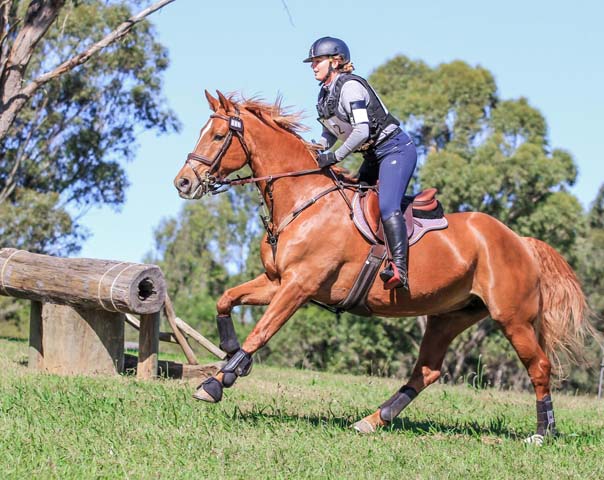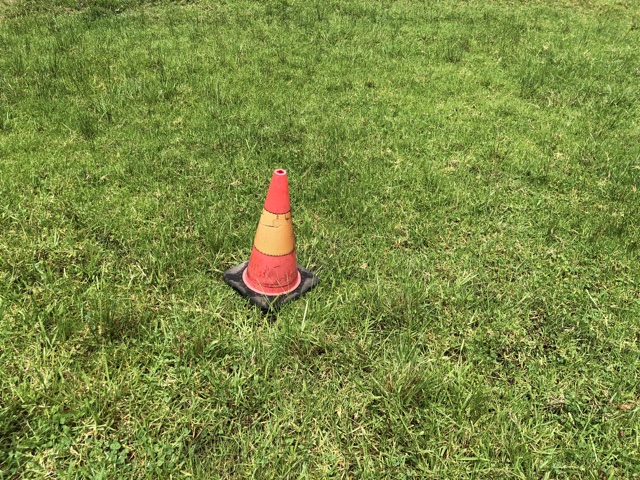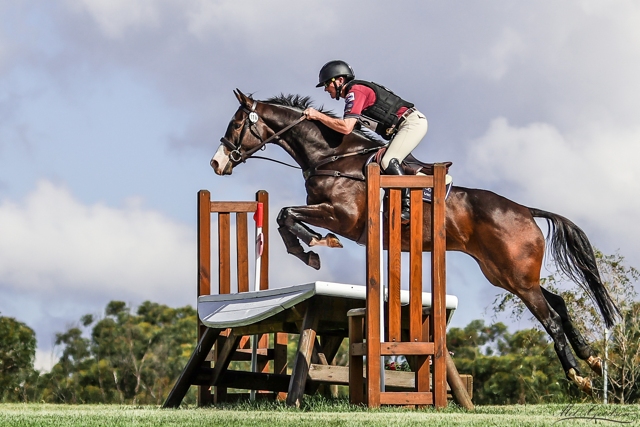Fitness for Eventing
With leading Australian coach and 5* winner Craig Barrett. Article by Alison Duthie

Are you and your horse Fit to Event?
In the second of our articles with international event rider Craig Barrett, Level 2 eventing and dressage coach, we asked the question just how fit do event riders, at the lower levels, and their horses have to be?
Fitness and Feel
I believe that most horses can generally cope with lower level eventing as long as they are being worked at least three times, or preferably, five times a week. Given that amount of work, the average horse should easily be able to canter round a course up to 95cm. That is assuming that the horse is used to the job and probably aged anywhere above six. It may be a little different for horses who haven’t evented before or a young horse who hasn’t been in regular work for very long. This could be especially true if the horse in question has a bit of warmblood in it or has been out in the paddock for a long time.

It’s important to learn how your horse feels when you are out on the cross country course. You must be aware and take note of the situation as it is happening. If he is puffing quite a bit when you are only three quarters of the way round the cross country course ask yourself the question ‘how does my horse feel when I ask him to go on a bit?’. Does he feel reluctant? If that’s the case, it’s not hard to work out that he needs to be a bit fitter. Again, it comes down to the type of horse you are riding. Thoroughbreds naturally find galloping easier and will probably still be pulling your arms out at the finish whereas you often have to teach a warmblood horse how to gallop.
How to work on your horse’s fitness
It’s important to find an area of land that is going to be suitable to do your fitness work. Realistically if all you have is a 20 x 60 arena it’s going to be difficult and you may have to take your horses somewhere with more space, preferably with a bit of a hill, to be able to do your canter work.
If you are competing at between 60 – 95cm you are going to be required to ride at around 400-500 m per minute on the cross country course. It’s important to know what that feels like and what speed you are actually going. This is where the Cross Country App can be very useful as it can measure distances. I would suggest that wherever you are doing your fitness work you set up the App and walk 400 or 500 metres (depending on your level) and mark that spot with a cone (or similar) walk another 400 metres and do it again and continue that process for at least a few cones if possible. Once you have done some canter work using your cones and are starting to get a feel of your speed you could consider doing some interval training.

Interval Training
The idea behind interval training is that it raises your horses heart rate for a certain length of time, then you let the heart rate go down again, before doing more canter work. I would suggest starting off in 3 minutes intervals meaning you canter for 3 minutes, walk for 3 minutes, canter for 3 minutes, walk for three minutes and then do your last 3 minute canter. Your first canter and your last canter in your training should always be the slower ones as don’t want to stress the horse when you are warming up or coming to the end of your session. A 3 minute canter session will be more than adequate for anyone riding up to EvA 95
Start off with your first 3 minutes being 400 /450 metres a minute (mpm) and build your middle canter up to to 550mpm (the middle minute of the middle session) and then bring your last three minutes back to 400mpm.
I do think it’s quite hard for riders these days to get a feel of what speed they are travelling at. Some time ago when roads and tracks were in the sport you really had to know how fast you were going at all paces. We were doing roads and tracks at 220mpm, steeplechase at 690mpm and cross country at 570mpm. By doing all that you really gained an inbuilt feel for your horses speed and pace, which I know certainly helped me.
Rider fitness and the 2 Point Seat

I think riders who are riding 3-5 times a week should probably be fit enough to event at the lower level although, just like your horse fitness, you should take note of how you feel at the end of cross country. But what I do strongly believe is the importance of practising the position you should be in when you go cross country and that position is the 2 point seat.
Riders have to be better in the 2 point seat. They must be able to put their stirrups up and ride without sitting in the saddle. We often see riders going all the way round a cross country course with stirrups that are too long and sitting in the saddle – they do not get off the horses back. That is not the way to go cross country and they finish looking exhausted and I’m not surprised.
Learning the 2 point seat can be quite hard work and you may feel a little precarious as you get used to that position. Your calf muscles will hurt and then your lower back will hurt but, the more you do it the better and stronger you will get. You may want to use a neck strap to help you with your balance as you get used to the feeling of being in the 2 point seat. Given time it will be a lot easier for you and your horse if you can get into a good 2 point position and stay there.
The 2 point seat came into being as it just makes it easier for both the rider and the horse – but it is something you have to practise. Make it part of your weekly routine that you put your jump saddle on, put your stirrups up and canter round, or canter round and jump a few cross rails. When you land after a fence and are travelling to the next fence you have to have your stirrups short enough that you can immediately get out of the saddle and be comfortable cantering to the next fence.
It all comes down to balance. If you are not balanced, it’s exhausting trying to go round a cross country course. If you are sitting in the saddle when your horse is going at 400 or 500mpm round a whole course you are not going to be balanced – it’s just too hard. So get up in that 2 point seat and stay there.
Mental fitness

Many high level riders manage to stay fit simply by riding several horses a day, while others might include going to the gym, the pool or some running to improve their fitness. I do believe that the fitter you are the easier it is to stay focussed on the job and that’s important whatever level you are riding at.
Take, for example, the rider who is riding 3 horses at a 5* event. If they weren’t fit enough it would certainly have an impact on their decision making process. I’m sure they would still be able to get on and jump the horse but if something went wrong on cross country I would question the unfit riders ability to make a good, quick decision to get things back on track. In reality it is rare to see an unfit 5* rider and a lot of that has to do with the fact that they know how important it is to stay sharp mentally.
Download CrossCountry App
Craig Barrett is an Australian International 5* winner with over 25 years experience in competing and coaching at the highest level in eventing. Together with his wife Prue they run a boutique breeding facility at their property Sandhills in Branxton, NSW Australia. Read more about Sandhills at http://www.sandhills.com.au/ or follow teamsandhills on Facebook and Instagram.
Images supplied by Amy Roberts, Imogen Kelly & Britt Grovernor